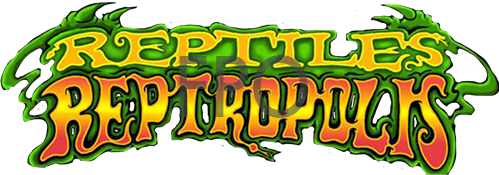CARE & SUPPLIES
(949) 492-6598
QUALITY BRED
CAPTIVE SINCE 2008
QUALITY BRED
CAPTIVE SINCE 2008
CARE & SUPPLIES
(949) 492-6598
DONAVAN
loves flutes
hates drums
CRESTED GECKOS
CRESTED GECKO CARE SHEET
Crested Geckos (Rhacodactylus ciliatus) are native to Southern Grand Terre, New Caledonia and at least one small surrounding island (Isle of Pines). Crested Geckos are semi-arboreal, spending most of their time in small trees and low shrubs. They will, however, seek out hiding places near the ground to sleep during the day. Crested Geckos feed on both insects and fruits and in most cases can be kept at room temperature. The Crested Geckos ease of care and unusual appearance has contributed to their exploding popularity.
HOUSING
Because Crested Geckos are so versatile and hardy, they can be kept in a number of different types of enclosures. In some cases, young geckos housed in large cages will not eat well. To avoid that we recommend that geckos less than 12 weeks old be housed in cages no larger than a 10 gallon aquarium. Four-month-old to adult Crested Geckos should be housed in a 20 gallon tall aquarium or larger. Three adult Cresteds can be comfortably housed in a 29 gallon aquarium. Screen Cages have also been used with great success as long as an effort is made to keep the humidity up. Keep in mind that regardless of what type of cage you use, that height is more desirable than length or width, particularly with adult geckos
TEMPERATURE, HEATING, AND LIGHTING
Temperatures for Crested Geckos should be maintained between 72 and 80 degrees for most of the year. At temperatures of 85 degrees or warmer, Crested Geckos will become stressed, which could lead to illness or death. Cresteds can tolerate night time temperature drops down into the mid 60′s but it is not necessary to provide this type of night time drop. A two-month cooling period is recommended to allow breeding Crested Geckos time to rest. During this period temperatures should be kept at 65 to 70 degrees.
A period of 12 to 14 hours of light is appropriate for most of the year, with ten hours of light during the cooling period. Lighting is most easily achieved with the use of fluorescent lights placed directly on the cage top. This will facilitate both the requirements of the geckos and any live plants within the enclosure should you choose to have them. It is unnecessary to use UVB lighting for Crested Geckos. For large collections, consider lighting the entire room with natural or artificial light.
Use a good digital thermometer with a temperature probe to monitor the environment. If temps cannot be kept in this range, a nocturnal heat light can be used. This type of light also allows for nocturnal viewing. Crested Geckos are not disturbed by this wavelength of light so it will not interrupt their photoperiod.
HUMIDITY
Crested geckos require moderate humidity. In most cases, misting the cage once or twice a day is enough. A good hygrometer or thermometer and hygrometer combo is a valuable tool. Ideally the humidity level should not drop below 50%.
Crested geckos should get several hours of higher humidity (80-100%) every day to ensure they shed properly. Misting heavily once or twice a day will achieve the required higher humidity levels. It is very important to allow the cage to dry to normal humidity levels in between mistings. If the cage is wet and humid all of the time, problems with shedding and bacterial infections can arise.
DIET AND FEEDING
Crested geckos can be fed a number of different ways.
1. CRESTED GECKO DIET ONLY: The easiest and most convenient method of feeding Crested Geckos is to use the powdered Crested Gecko Diet developed by Allen Repashy. This diet has been formulated to contain all of the essential fats, proteins, minerals, and vitamins that cresteds need. According to the manufacturer, Crested Geckos can be maintained on this diet alone with no insects in the diet, whatsoever. We recommend feeding your geckos at least 4-5 times per week.
2. CRESTED GECKO DIET & INSECTS: Crested Geckos can be fed the CGD along with crickets or other insects. Offer CGD 3-4 times per week and insects 2-3 times per week.
Feeding Insects: The best insects to feed are either crickets or feeder roaches, but Crested Geckos will sometimes consume waxworms or mealworms. There is some debate as to whether or not mealworms are safe to feed to Crested Geckos in that there is a possibility of them causing impaction, we choose not to feed them just to be on the safe side. The insects that you offer your geckos should be no larger than the distance from the geckos nose to its eye. All feeder insects should be dusted with a good calcium and vitamin d3 powder such as Rep Cal Calcium with D3. Insects should also be fed a high quality “gut load” diet for at least 24 hours prior to being offered to your geckos. Gut Loading enhances the nutritional value of the insects substantially. Repashy SuperLoad is what we use. In addition to that you can feed the insects dry fish flakes, leafy green vegetables, carrots, etc.
3. FRUIT MIXES, INSECTS, CUSTOM BLENDS This method should only be used by advanced hobbyists who are able to gauge the health and well being of their geckos. This method requires frequent checking of the calcium sacs, checking for weight loss, and other signs of deteriorating health. That being said, this is a viable method of feeding your geckos. For many years prior to the development of CRESTED GECKO DIET, hobbyists and breeders fed their geckos dusted crickets and supplemented fruit baby foods. The downside to this method is that there is a lot of guesswork in getting the right amounts of calcium, phosphorous, vitamins, and other essential nutrients. Too much or too little of these nutrients can be deadly, particularly with the fat soluble vitamins like Vitamin A, and Vitamin D3.
If you are willing to keep a close eye on your geckos, and willing to put some time and thought into your mixes, you can feed your own concoctions. Again, this is not for the beginner or intermediate hobbyist; this requires a lot of research and time and can get to be quite expensive.
Water
Crested geckos typically drink water droplets from the sides of their enclosure and from any plants or cage accessories. This is one of the reasons it is important to mist your geckos daily. It is also recommended that a small dish of clean water is present in the enclosure at all times.
Checking the Calcium Sacs
Crested Geckos store calcium in the roof of the mouth in what are called endolymphatic sacs. You can check these reserves from time to time to monitor the storage level of calcium. This is particularly important for breeding female geckos. You should check periodically, regardless of your feeding practices.
HANDLING CRESTED GECKOS
Crested Geckos are among the most handleable of all lizards. They tolerate moderate to heavy handling, even when they are relatively young, but don’t handle geckos that are less than two weeks old, or geckos you recently purchased or moved. Wait for a one- to two-week acclimation period for newly acquired geckos, which allows them to settle and get used to their new surroundings.
Once they are settled in, you can introduce your gecko to handling a little at a time. Five minutes of handling per day for the first few weeks is sufficient to allow your gecko to become used to you and to become less jumpy. Once they are comfortable with you, you can begin to handle them more. We recommend no more than 15 to 20 minutes of handling per day so as not to stress the gecko too much.
If your gecko is jumpy or flighty you can use what’s called the “hand walking” method. To do this you simply hold one hand out directly in front of the gecko and allow him to hop, walk, or jump to the extended hand, then you immediately place your free hand out in front again, and so on. Young geckos and newly acquired geckos typically need to be hand walked for several sessions before you can expect them to calm down.
TAIL LOSS
Crested Geckos can drop their tails if handled improperly, however most cresteds are reluctant to drop their tails unless you pinch or squeeze it somehow. Aggressive cage mates cause most tail loss, followed by accidentally closing the tail in a screen top or door. Careful handling does not usually result in tail loss. Tail loss is a normal defense mechanism and is not a medical emergency. The gecko will recover quickly and does not require any special care. Crested geckos are one of the few geckos that will not regenerate a new tail.
Baby Crested Gecko Care
Baby Crested Geckos are cared for the same way as adults with a few exceptions. Babies should be misted twice a day, and should not be over-handled. Always allow newly acquired baby Crested Geckos time to acclimate to their new cage before you begin a handling routine. Care should be taken to make sure hatchling geckos shed properly.
SEX DETERMINATION
Determining the sex of Crested Geckos is easiest on geckos that are over 6 months old. Male Crested Geckos will develop a very noticeable hemipenal bulge just below the vent. The hemipenal bulge develops on males at between 5 months and 9 months old. Females do not develop a bulge. Sexing juvenile Crested Geckos is considerably more difficult. Using a 10x or better jewelers loupe or magnifying glass, you can look for evidence of pore development in the region just anterior to the vent. Pore development may be seen on males at 5-10 grams but sometimes the pores do not develop until later.




